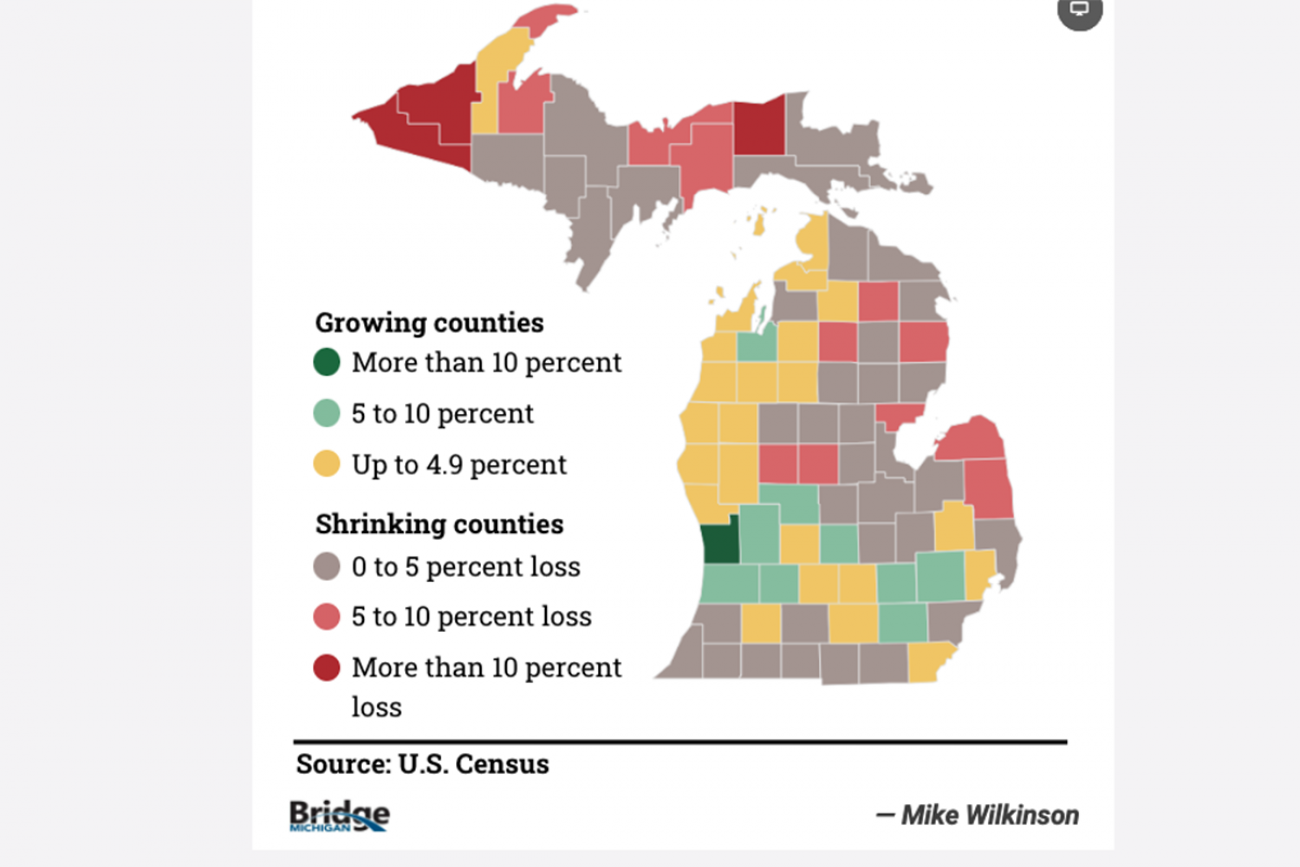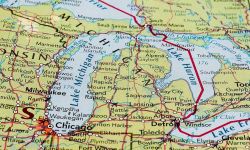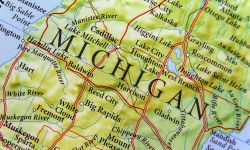Census takeaways: West Michigan gains, Detroit & U.P. lose, state more diverse

LANSING — West Michigan keeps growing, Detroit is still shrinking, the state is getting more diverse and more residents than ever before say they belong to two or more racial groups.
The U.S. Census Bureau on Thursday released new local-level population and demographic data from 2020, providing the most compressive snapshot to date of how the country has changed since 2010.
The numbers confirm prior findings: Michigan’s population grew by 2 percent to 10,077,331 residents, the second-slowest rate in the nation. Michigan is the 10th most populous state, down from its eighth in 2010, passed by Georgia and North Carolina.
The new data — delayed for months, in part due to challenges associated with COVID-19 — will help Michigan's new independent redistricting commission redraw political boundaries for 2022 as the state loses a congressional seat because of stagnant population. Michigan will have 13 districts next year.
Related:
- Census 2020: Michigan has a few areas of growth, wide swaths of decline
- West Michigan reverses Chicago exodus, gaining residents as state stagnates
- Census losses could squeeze northern Michigan, Detroit as redistricting begins
- Census 2020: Look up population changes in your Michigan community
But it’s about more than just the next election cycle.
All told, 2020 Census data will "be used for the next 10 years to shape the future of our country," acting Census Bureau Director Ron Jarmin said Thursday in a virtual press conference.
"Local leaders can use this data to make decisions such as where to build roads and hospitals, and how to help our nation recover from the pandemic," he said. And it will "help inform how hundreds of billions in federal funds will be distributed each year."
In the coming days, Bridge Michigan will explore the 2020 Census and what it means for the state. But here are quick takeaways from Thursday's release that highlight the changing landscape of Michigan and its 10,077,331 residents.
West Michigan keeps growing
Along the shore of Lake Michigan, Ottawa was the state’s fastest growing county over the past decade, growing by 12.3 percentage points to 296,200 residents. And Kent County was the third-fastest grower at 9.2 percent, reiterating the west Michigan population boom that Bridge reported on earlier this week.
Michigan's other fastest growing counties included Grand Traverse (9.5 percent), Allegan (8.2 percent) and Washtenaw (8 percent).
All told, 33 of Michigan's 83 counties had at least some population growth between 2010 and 2020.
The U.P. keeps shrinking
Fifty Michigan counties lost population over the past decade, including several along the southern border of Ohio, the Thumb region, the northeast Lower Peninsula and, most dramatically, the Upper Peninsula.
Five of Michigan's six fastest-shrinking counties are in the U.P.: Luce (-19.5 percent), Ontonagon (-14.2 percent), Gogebic (-12.5 percent), Baraga (7.9 percent) and Alger (7.9 percent).
Isabella, a mid-Michigan county that includes Mt. Pleasant, shrunk at the fourth fastest rate after losing 8.4 percent of its population. And population declines continue in the Thumb, where only Lapeer County posted gains.
From 2000 to 2010, only 40 of Michigan’s counties lost population.
Detroit population plummets
Michigan’s biggest city, Detroit, lost 10.5 percent of its population, falling to 639,111.
Mayor Mike Duggan, who has repeatedly said he should be judged on whether the city gains population under his leadership, questioned the data and claimed Detroit was undercounted "by at least 10 percent."
Duggan said DTE Energy reports show the city has 254,000 occupied households, indicating the “Census somehow failed to count 25,000 occupied homes with running electricity.”
“We will be pursuing our legal remedies to get Detroit an accurate count,” Duggan said.
Duggan’s predecessor, Dave Bing, made a similar threat when Detroit’s population fell 25 percent to 711,777. The count was not changed.
Flint, meanwhile, lost 20.7 percent of its population to fall to 81,252, Grand Rapids rose 5.8 percent to 198,917, and Warren, Sterling Heights, Ann Arbor and Dearborn grew nearly 4 percent or more.
Indeed, over the past 10 years, most of the state’s 30 biggest cities grew in population, continuing a national trend that saw growth in metropolitan areas while rural ones declined.
Michigan got more diverse, less white
Michigan, like most of the country, appears to have grown more racially diverse over the past decade, although Census officials say that may be partially attributable to new questions posed to residents.
In 2020, 76.7 percent of Michigan residents identified as white and non-Hispanic, down from 80.1 percent in 2010. That's 274,288 fewer residents, a 3.6 percent decrease, a larger drop than the 2.6 percent reduction nationwide.
Only 11 Michigan counties actually became more white over the past decade, led by some of the fastest growing: Ottawa, Grand Traverse and Allegan. The share of white residents in the U.P.'s Ontonagon County fell by 17 percent, making one of the state's fastest-shrinking regions also one of its fastest diversifying.
Michigan's fastest growing demographic: Two or more races
Michigan's increased diversity is a reflection of the continued melting pot: The fastest-growing demographic in the state is people who describe themselves as belonging to two or more races, which grew by 404,996 residents to 6.3 percent of the population, up from 2.3 percent in 2010.
Michigan's 176 percent growth in residents of two or more races was slower than the national growth pace of 276 percent.
Black residents remain Michigan's largest non-white demographic, but the share of residents who identify as African American, either alone or in combination with another race, essentially held flat from 2010 (15.2 percent of the population) and 2020 (15.3 percent).
The ratio of Hispanic or Latino residents, meanwhile, grew from 4.4 percent of the population to 5.6 percent in 2020. And the share of Asian-American residents also grew from 3 percent to 4.3 percent.
Wayne County still the largest, and most diverse
Wayne County, home of Detroit, remains the state’s largest county with 1,820,584 residents. And it is also the most diverse, with 42 percent of residents identifying as Black, either alone or in combination with another race, compared to 51 percent of residents who are white alone.
Oceana County, along the shoreline of west Michigan, has the state's largest share of Hispanic or Latino residents, who make up 15.4 percent of the population.
Washtenaw County, home to Ann Arbor and the University of Michigan, has the state's largest share of Asian residents, with 11.4 percent of the population identifying as Asian alone or in combination with another race.
Michigan is getting older
The aging of Michigan has accelerated in the past 10 years, as the number of children continues to decline. The percentage of those under 18 fell to 21.5 percent of the population from 23.7 percent in 2010.
Nationally, children under age 18 make up 22 percent of the population, and Michigan is aging faster than other states: It ranked 27th among states for the percentage of population over 17 in 2010. Now it is 37th.
See what new members are saying about why they donated to Bridge Michigan:
- “In order for this information to be accurate and unbiased it must be underwritten by its readers, not by special interests.” - Larry S.
- “Not many other media sources report on the topics Bridge does.” - Susan B.
- “Your journalism is outstanding and rare these days.” - Mark S.
If you want to ensure the future of nonpartisan, nonprofit Michigan journalism, please become a member today. You, too, will be asked why you donated and maybe we'll feature your quote next time!




